Repost of the Day: Tulum
September 13th, 2020
After swinging into the Yucatán yesterday, we’re on the east coast of the peninsula in Tulum. J and I spent a month here in 2018. I found Tulum to be a town of dualities — historic sites and new developments, locals and influencers, dreams and realities. It was hard to tell if residents were happy with the gold-rush of interest from foreign tourists or wishing instead that Tulum could retain its authenticity in the shadow of flashier Cancún and Playa del Carmen, just up the coast.
In any case, it was a thought provoking month — mainly because I was able to explore and learn about some of the important Mayan sites of the region, which we’ll get to later this week. I hope you enjoy this post, whether you’re re-reading it again or finding it for the first time.
Hasta mañana,
Kelly
Repost of the Day: Adding a bit of light to the darkness as we get through the pandemic together. This series features travel photos from my archives, shared with you while staying close to home.
***
We’ve been here for one month visiting friends, working remotely and relaxing in Tulum, Mexico after leaving Vancouver, Canada. Many have asked what we’re doing and we don’t have an immediate answer to that question. We’ve embarked on a nomadic lifestyle, at least for now. We’ll see how long it lasts based on budget, desire and knocks on the door from my husband’s world in film and visual effects. We came here for tropical heat, cheap tacos and a slower pace of life. We’ve found all of that plus a few adventures, some big surprises and an alluring dose of Mayan history.
We’ve been staying in a great apartment on the edge of town, which also happens to be a 20-minute bike ride from the Tulum ruins. I’ve been to the ruins once before — about 15 years ago — but that was long before history and culture really began to make my heart beat. Being here again, in the context of the Yucatán Peninsula, has been given me a new awareness of the richness and depth of culture in this region. The highlights of spending time here have included watching the Travesia Sagrada, and learning about the vast network of caves and cenotes below the surface of Tulum and its neighboring towns.
The Travesia Sagrada honors a historic journey from centuries ago. Mayans traveled by canoe (departing north of Tulum) to the sacred island of Cozumel and its temple honoring Ixchel, goddess of the moon and fertility. The pilgrimage was important for women hoping to have children and men praying for a good harvest.
Nowadays, about 300 men and women in 30 canoes row to Cozumel and return the following morning in an annual ritual. In the process of learning about the Travesia Sagrada through a friend who participated, I’ve also learned about temescals (sweat lodges) and a Spanish bishop named Diego de Landa who single-handedly did more than anyone else to both record and destroy written records of Mayan history. It was de Landa who documented the travesia in the 1500s, but it was also de Landa who burned essential Mayan manuscripts and images out of his religious intolerance.
As for the caves and cenotes here, they may be Tulum’s most enjoyable secret, although they’re not really a secret. Many people know of them but they aren’t too overcrowded. Yet. Typically, a cenote is a large hole in the ground that leads to a larger hole filled with fresh water draining to the ocean. Most cenotes are very deep (in some, you can’t see the bottom) and often connected to other cenotes by caves and channels.
If you’re an adventure scuba diver, cenotes are a unique paradise. If you’re not comfortable in the water, you will hate cenotes. They can be very dangerous if you’re inexperienced, unprepared or your equipment fails (which Jay was witness to at a cenote lagoon south of Tulum). We explored Cenote Labnaha with a guide, which was both fascinating and freaky. For one hour we snorkeled through low caves, dodged stalactites, looked down at the scuba ropes leading into even deeper caves, and turned off our flashlights to 15 seconds of complete and terrifying darkness.
Cenotes played a part in Mayan history as a place of worship and sacrificial offerings. The Tulum ruins include a “House of the Cenote” and at Ek Balam there’s a cenote visible from the La Acrópolis. Our next door neighbor, who we call the Jacques Cousteau of the Yucatán, has been exploring and mapping Tulum’s network of caves and cenotes for the past two decades. He has found artifacts and human bones in several.
Tulum itself is a rustic little town with upscale construction threatening its charm at every turn in the road. It’s straddling an impossible line between retaining its character and leveraging the considerable foreign interest it holds as a seaside destination not far from Cancún. Old town Tulum is inland, while the new hipster bars, bistros, studios and boutique hotels line the narrow coastal road just a bicycle ride away.
A potentially more threatening issue is climate change, evident in a seasonal super-bloom of sargasso macroalgae that is relentlessly dumping ashore in a rotting brown mass (pictured above). Hotels are trying to remove it but no one can keep up with it and hardly anyone is hanging out at the beach as a result. The sargasso forms in warm currents drifting west from Africa, across the Atlantic. According to locals, blooms in recent years have been worse than ever.
In addition, Mexico’s elections are just a couple weeks away and running for office here can be a life-threatening pursuit. This is a country battling many forces against it, including its neighbor to the north.
Beneath all of this patina, the history here shines brightly. The region is punctuated by the magnificent temples of Chichen Itza, Ek Balam and Cobá, and countless smaller sites cover the peninsula. It would take weeks — if not months — to see them all. Yet it feels like layers and layers remain to be discovered in the crumbling limestone and tropical vegetation.
The Tulum ruins stand alone as a unique coastal site — the only one in Mayan history — and old port for the city of Cobá. Originally called Zamá (dawn or sunrise), the site of Tulum flourished from 1200-1500 AD, and declined in the 75 years after the Spanish made first contact in the early 1500s.
Between 1,000 and 1,500 people lived at Tulum. Based on the wall with four small doorways protecting the ruins, people living within the site may have been of a higher social class than people living outside the wall.
El Castillo (The Castle) sits at the cliff edge overlooking the ocean. Surely the view is spectacular from it’s highest level although you’re not allowed to climb the steps. Standing alongside the east wall facing the sea, it dominates and feels fortified against the weather with its battered construction. But the articulation of the stone ledges and borders adds delicate beauty. Whoever designed the castle and surrounding structures had an evident appreciation of design and proportion.
The Descending God, a notable deity of the Yucatán peninsula, is portrayed at the Tulum Ruins. This figure holds a characteristic pose — inverted, with feet at the top and face at the bottom looking forward. The Descending God is associated with bees and war, and interesting combination. Honey was a vital export of the region and war was a way of attaining power. You can read more about the Descending God here.
The Temple of the Frescoes holds weathered depictions of deities above the colonnade. Even a bit of color remains from the natural pigments (achiote, chochineal and palygorskite or Maya Blue among them) that once painted the sites of this region but have since washed away. What I find most striking about Mayan art is that it so closely resembles the style of indigenous art throughout western Canada. The depictions of gods and animals in both regions share a highly graphic quality of thick lines, robust shapes and bold expressions. Is it coincidence or relation?
Walking around the rest of the site, all of the structural remains have simple rectangular footprints with finished-floor elevations above ground level. Could the varied floor heights have indicated status even within the social hierarchy of the select people living here? Could this detail have helped keep the bugs and reptiles out — of which there are many! Or the rain? Did the added elevation simply keep the floor dry? It has rained in solid sheets over the past few days so this had to have been a concern at such an exposed site bordering the ocean.
There are so many unanswerable questions, lost to the forgetfulness of time. Even I have questions related to my own life that have surfaced while being here. When I was a kid — four or five years old — I had two imaginary friends for a period of time. I have no recollection of how I conjured them up. I only remember their unusual names: Chaka and Cobba (as I spelled them). Since coming here, I’ve learned two interesting names that correlate: Chaahk, the Mayan god of rain and Cobá, the historic Mayan city that once dominated the region.
Have I lived here before? Is it coincidence or memory?





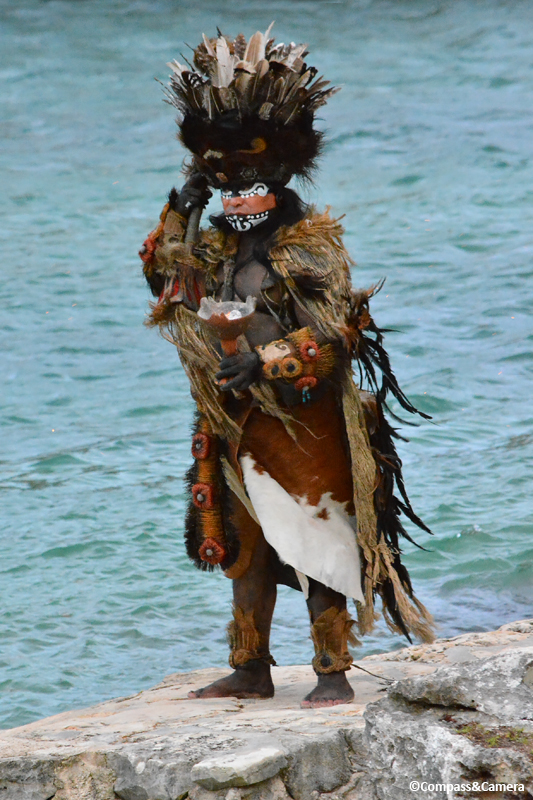
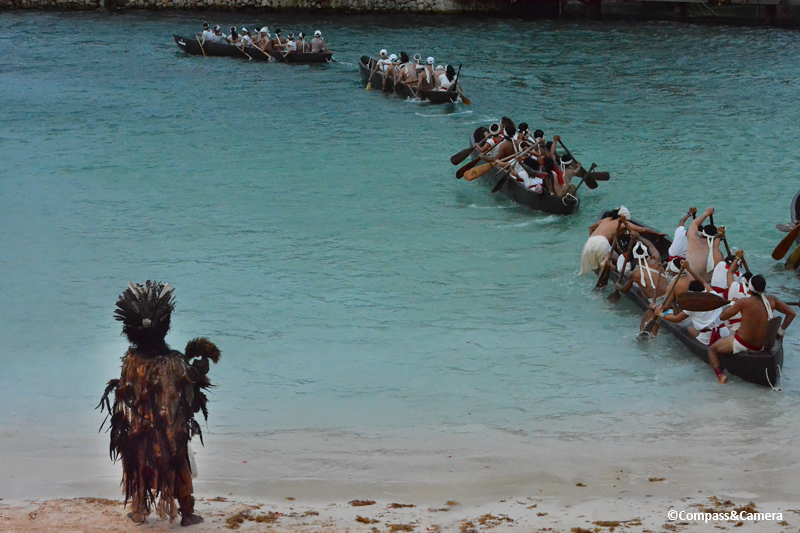









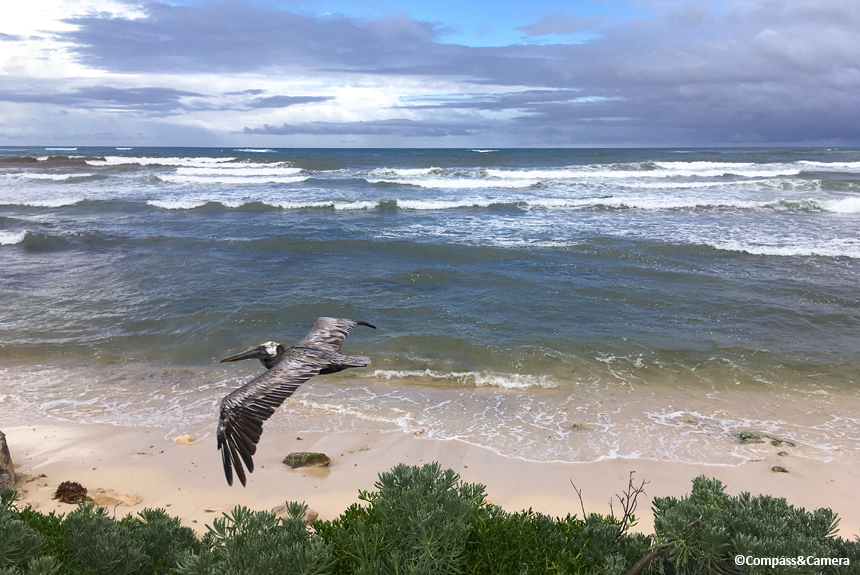










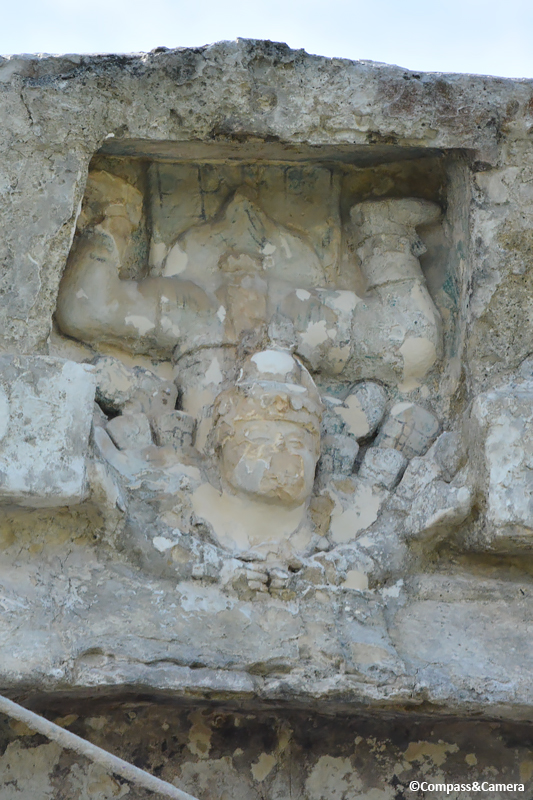







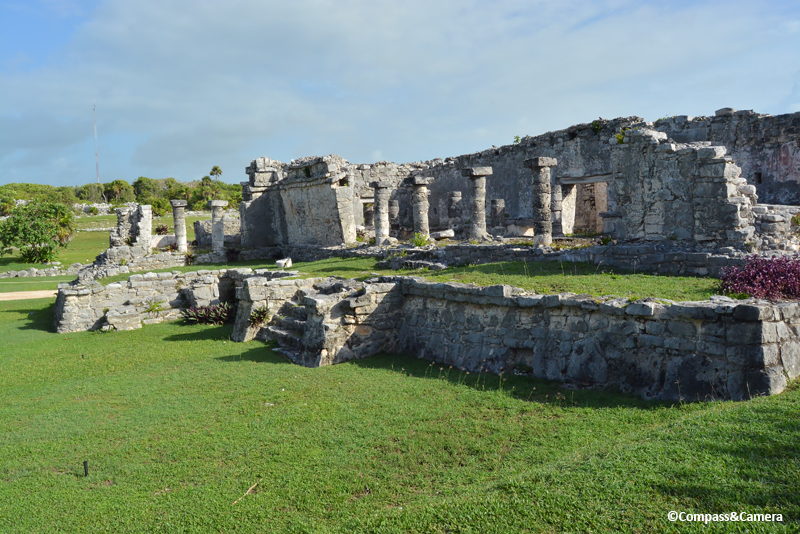
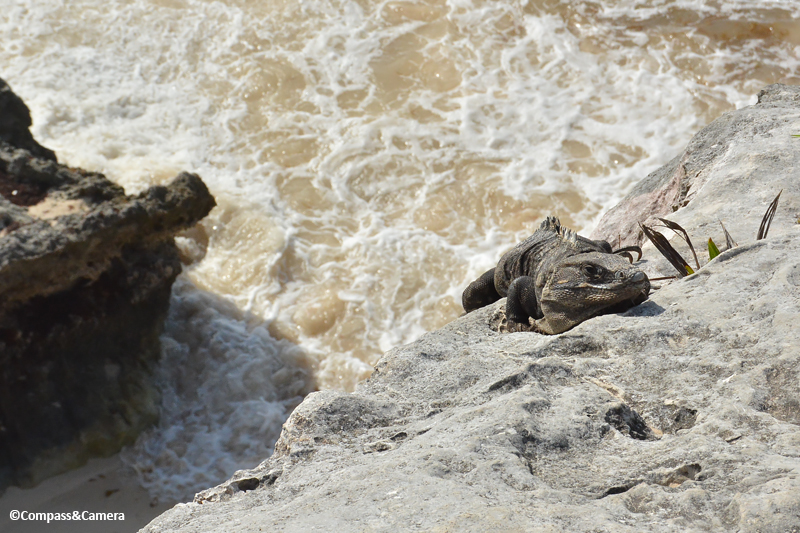
A very interesting post both for the explanations given and for the questions raised.
LikeLiked by 1 person
Just catching up with comments. Thanks for sharing your thoughts Lookoom!
LikeLiked by 1 person
Fascinating read into history! Great post for history and mystery buffs alike 🙂
The canoe journey pics look great, as do all the others.
The snorkelling in those caves sounds outright scary, esp switching off all lights inside that cave 😱, 15 seconds would have seemed very very long! Wonder how the Mayans used those caves without guide ropes and other modern equipment.
LikeLiked by 1 person
It WAS a very, very long and spooky 15 seconds. You raise a great question — I have no idea how the Mayans were able to access the cenotes and leave artifacts behind. It’s possible the landscape was different back then or that they had better knowledge of the cave network overall (which connects and runs across a large area of land). Super fun to think about!! A true mystery. 🙂
LikeLiked by 1 person
And the mysterious connect with the names of those imaginary friends is very very intriguing.
LikeLiked by 1 person
LOL, thanks for indulging that quirky fact from my childhood! 🙂
LikeLiked by 1 person
I can assure you that the two names of your imaginary friends came suddenly, without any reference, out of nowhere, and became household words for our family. On car trips you sat in the back with your brother and spoke to these two friends as if they were sitting there with you .I was mystified and intrigued, yet sort of happy about it because I had an imaginary friend when I was young also.
mom
LikeLiked by 1 person
It’s good to have friends, right? Even from a past life in the Mayan culture on the Yucatan Peninsula! Fun to think about…
LikeLiked by 1 person
Great post. We were there last year and got some very first-hand local information about the environmental disaster Tulum is becoming. The garbage dumps are out of control and the Mexican government is letting construction go on without any environmental safeguards. You can go to our site and click on Mexico.
This video explains it all: https://www.youtube.com/watch?v=izKoyIfDI3w
Visitors should be aware of what is going on there and any other place they visit to make sure they are not adding to the problem.
After our visit, we were saddened by what we saw that the tourist does not see.
Cheers!
LikeLiked by 1 person
Thank you so much for sharing this link. I’m really looking forward to watching the video, sadly. And I find myself singing Dark Side of Tulum to Pink Floyd’s Dark Side of the Moon. 🙂 I’ll be sure to check out your posts as well. Very curious to read your thoughts. Tulum is an unfortunate example of what happens when tourism and development are left unchecked. Hoping there’s time to slow down and reconsider the infrastructure and approach required.
LikeLiked by 1 person
Interesting, Kelly! And I love that you mentioned your imaginary friends! 🌞
LikeLike
Ha, ha! Thank you, Lisa! 🙂 It’s such a strange coincidence that my imaginary friends would come back to life in Tulum.
LikeLiked by 1 person
Pingback: Mayan Mastery |
Lovely to be taken back to the Yucatan for a bit. Oh I do miss Mexico. We spent 2 months in Playa and did numerous day trips, but not to Tulum, though of course we went to Chichenitza and Ek Balam. So fascinating about your imaginary friends, especially with your mom’s added info. I bet you have lived there before.
Alison
LikeLike
Thanks, Alison! Love your support for the idea that I’ve lived there before. I do think about going back someday and spending much more time. And eating a lot of Mexican food! And visiting Merida, which we didn’t get to. Such a wonderful region and country packed with culture and history, as you well know!
LikeLiked by 1 person
We loved the whole Yucatan Peninsula. Except Merida 😦 but that was just circumstances (in part staying in the wrong place). If you do ever get there can recommend nomadis hostel where you can get a private ensuite.
LikeLike
Oh, yay! Love a good recommendation! Really hoping we go back to see more someday. I think I remember reading your post about not being happy with your first location… Isn’t it interesting in how much a place to stay affects our impressions of a place? That’s worth a blog post! 🙂
LikeLiked by 1 person
Chaka and Cobba sound way too close to Chaahk and Cobá to be called a coincidence. Despite my very much belief in science (although the word ‘belief’ is rather misleading), I like to see this particular snippet of your life as a beautiful mystery of the universe. I remember reading this post of yours, but it still feels so nice to read it today, especially when the idea of traveling to Mexico seems far-fetched these days.
LikeLike
Oh, Bama. Every time I read a comment from you I can’t wait even more to meet you someday. I share your belief in science, especially these days and especially right now in the U.S. But there ARE some un-explainable things in the world, too. Thank you for calling this one a “beautiful mystery of the universe.” It was strange to have even included those imaginary friends in the original post and this re-post (weird to even see their names written!) but the realization I had in Tulum was hard to deny. In any case, here’s to mysteries and more trips to Mexico in the future!
LikeLiked by 1 person
You are one of the people who I really want to meet in person, Kelly — I can imagine the discussions we’ll have over so many things. But first we have to survive this pandemic. Hope you’ll get to return to Mexico sooner than later, and we’ll get to meet in the not-too-distant future!
LikeLiked by 1 person
STAY HEALTHY! We have to meet up! 🙂
LikeLiked by 1 person
What a treat to have a month to explore, even if there might have been a bit of work mixed in. It’d give you a chance to breath in the area and culture, and escape the “if this is Tuesday it must be Belgium” travel trope. Tulum sounds like a good spot for it.
LikeLike
Thanks for your thoughts, Dave! It was a treat to have a month. My husband and I are sort of moving into this travel mode where we try to “live” wherever we go. It takes the pressure off of trying to see everything in a week or two, and also seems to create a more authentic picture of the place we’re visiting (the good and the bad, as we saw in Tulum). We did this in Paris as well. We realize that we’re very lucky to be able to travel this way — all of my work is digital and when he was in film (not anymore) he usually had a month or two between big projects so we packed up the hotspot (a wifi back-up for me) and went. We’re hoping to do more trips like this in future shoulder seasons. Love your travel trope example, LOL!
LikeLiked by 1 person
I don’t know if you’re old enough to have heard of it, but href=”https://en.wikipedia.org/wiki/If_It%27s_Tuesday,_This_Must_Be_Belgium#:~:text=If%20It%27s%20Tuesday%2C%20This%20Must%20Be%20Belgium%20is,and%20features%20many%20cameo%20appearances%20from%20various%20stars.”>that trope didn’t originate with me.
LikeLike
Oops, didn’t get that link formatted quite right. Google “If it’s Tuesday, this must be Belgium” to find out about a movie from the 60s.
LikeLike
Dave! I watched a clip. 🙂 I can’t wait to see more! Looks funny and love the vintage footage. I hadn’t heard of the film so thanks for sharing!
LikeLiked by 1 person